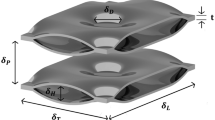Abstract
The pinch point is important for analyzing heat transfer in thermodynamic cycles. With the aim to reveal the importance of determining the accurate pinch point, the research on the pinch point position is carried out by theoretical method. The results show that the pinch point position depends on the parameters of the heat transfer fluids and the major fluid properties. In most cases, the pinch point locates at the bubble point for the evaporator and the dew point for the condenser. However, the pinch point shifts to the supercooled liquid state in the near critical conditions for the evaporator. Similarly, it shifts to the superheated vapor state with the condensing temperature approaching the critical temperature for the condenser. It even can shift to the working fluid entrance of the evaporator or the supercritical heater when the heat source fluid temperature is very high compared with the absorbing heat temperature. A wrong position for the pinch point may generate serious mistake. In brief, the pinch point should be founded by the iterative method in all conditions rather than taking for granted.
Similar content being viewed by others
References
Saleh B, Koglbauer G, Wendland M, Fischer J. Working fluids for low-temperature organic Rankine cycles. Energy 2007; 32(7): 1210–1221.
Karellas S, Schuster A, Leontaritis AD. Influence of supercritical ORC parameters on plate heat exchanger design. Appl Therm Eng 2012; 33–34: 70–76.
He C, Liu C, Gao H, Xie H, Li YR, Wu S, Xu J. The optimal evaporation temperature and working fluids for subcritical organic Rankine cycle. Energy 2012; 38(1): 136–143.
Ryms M, Pys T, Klugmann-Radziemska E. Adapting the pinch point analysis to improve the ORC design process. Int J Energy Res 2013; DOI: 10.1002/er.3011.
Chen H, Goswami DY, Rahman MM, Stefanakos EK. A supercritical Rankine cycle using zeotropic mixture working fluids for the conversion of low-grade heat into power. Energy 2011; 36(1): 549–555.
Venkatarathnam G, Mokashi G, Murthy SS. Occurrence of pinch points in condensers and evaporators for zeotropic refrigerant mixtures. Int J Refrig 1996; 19(6): 361–368.
Venkatarathnam G, Murthy SS. Effect of mixture composition on the formation of pinch points in condensers and evaporators for zeotropic refrigerant mixtures. Int J Refrig 1999; 22(3): 205–215.
Liu Z, Zhao L, Zhao X, Li H. The occurrence of pinch point and its effects on the performance of high temperature heat pump. Appl Energ 2012; 97(9): 869–875.
Zebian H, Mitsos A. A double-pinch criterion for regenerative Rankine cycles. Energy 2012; 40(1): 258–270.
Li YR, Wang JN, Du MT. Influence of coupled pinch point temperature difference and evaporation temperature on performance of organic Rankine cycle. Energy 2012; 42(1): 503–509.
Fischer J. Comparison of trilateral cycles and organic Rankine cycles. Energy 2011; 36(10): 6208–6219.
Pan L, Wang H, Shi W. Performance analysis in nearcritical conditions of organic Rankine cycle. Energy 2012; 37(1): 281–286.
Pan L. Optimization of Organic Rankine Cycle and Investigation on Performance of Radial Flow Turbine for Power Generation with Low Grade Heat Source. Doctoral Dissertation, Tianjin University, Tianjin, 2012.
Calm JM, Hourahan GC. Refrigerant data summary update. HPAC Engineering 2007; 79(1): 50–64.
Lemmon EW, Huber ML, McLinden MO. NIST Standard Reference Database 23, Reference Fluid Thermodynamic and Transport Properties (REFPROP), version 9. 0. National Institute of Standards and Technology 2010.
Author information
Authors and Affiliations
Rights and permissions
About this article
Cite this article
Pan, L., Shi, W. Investigation on the pinch point position in heat exchangers. J. Therm. Sci. 25, 258–265 (2016). https://doi.org/10.1007/s11630-016-0858-7
Received:
Published:
Issue Date:
DOI: https://doi.org/10.1007/s11630-016-0858-7




